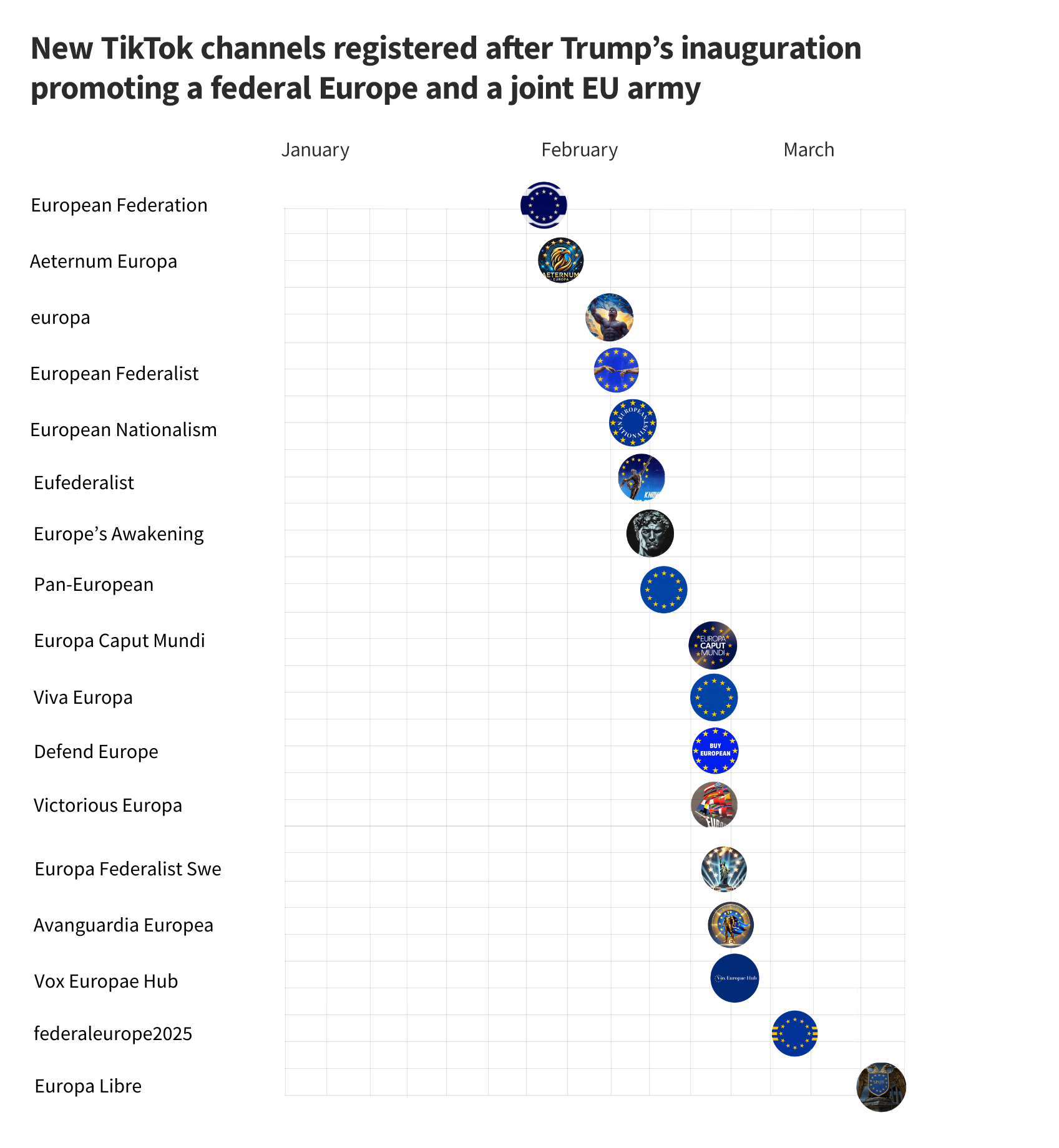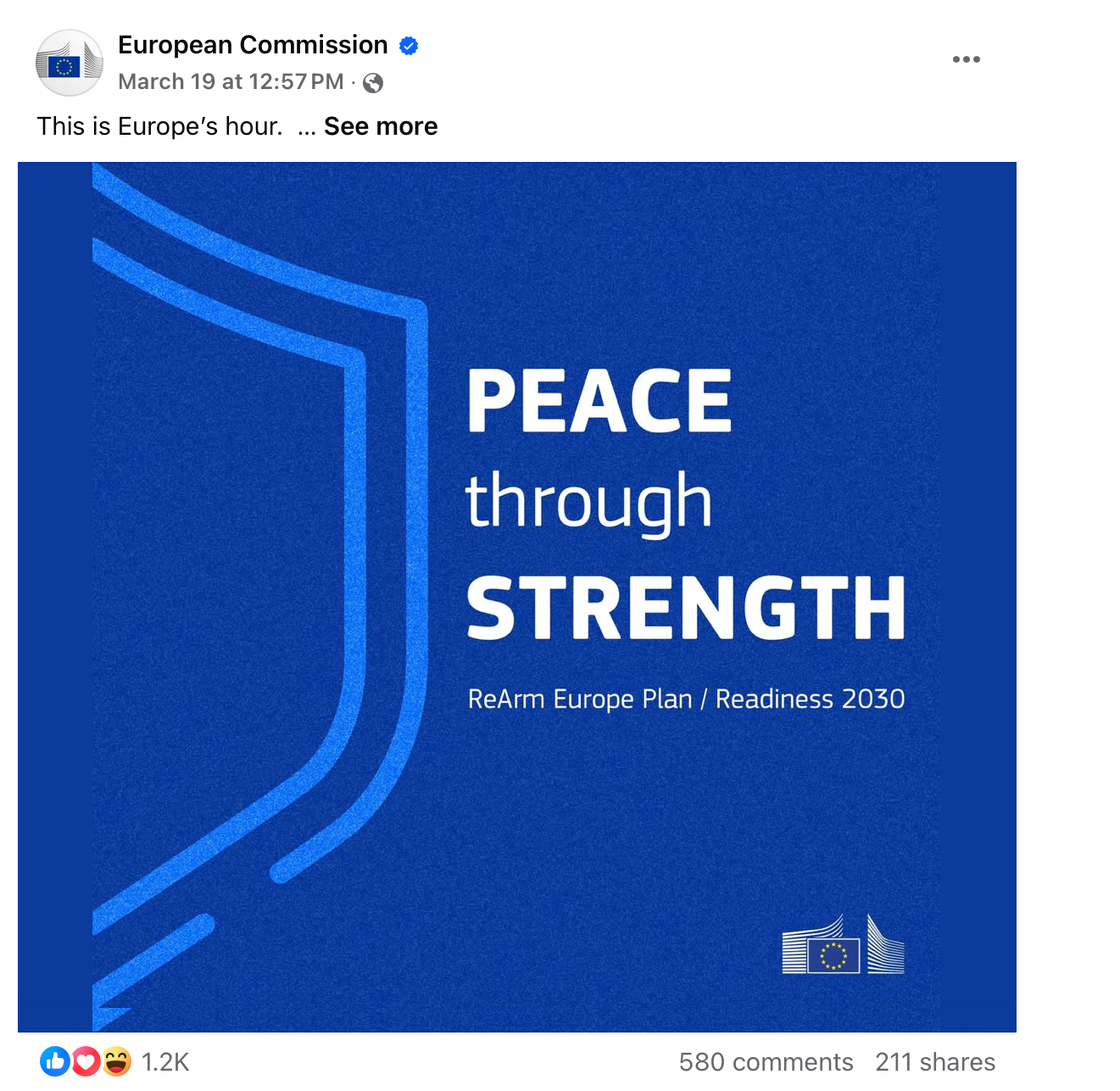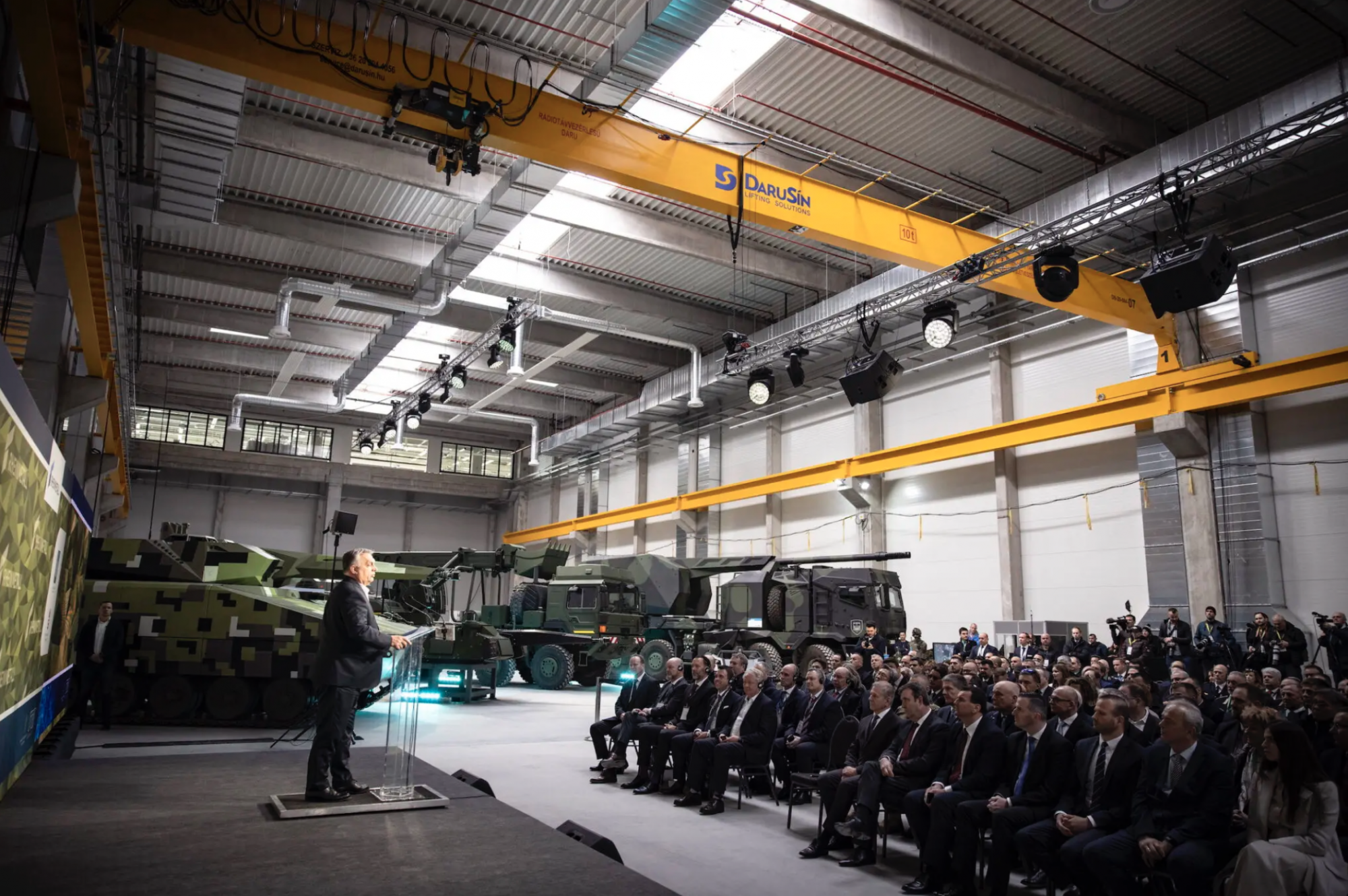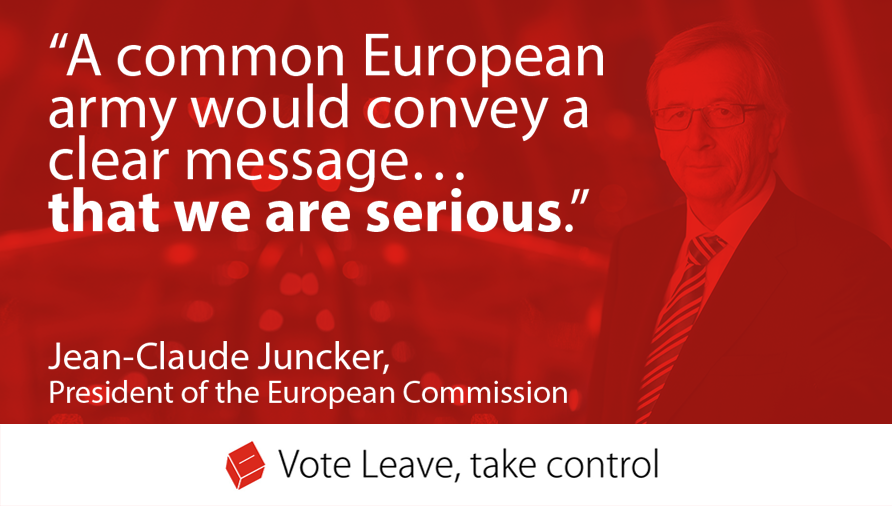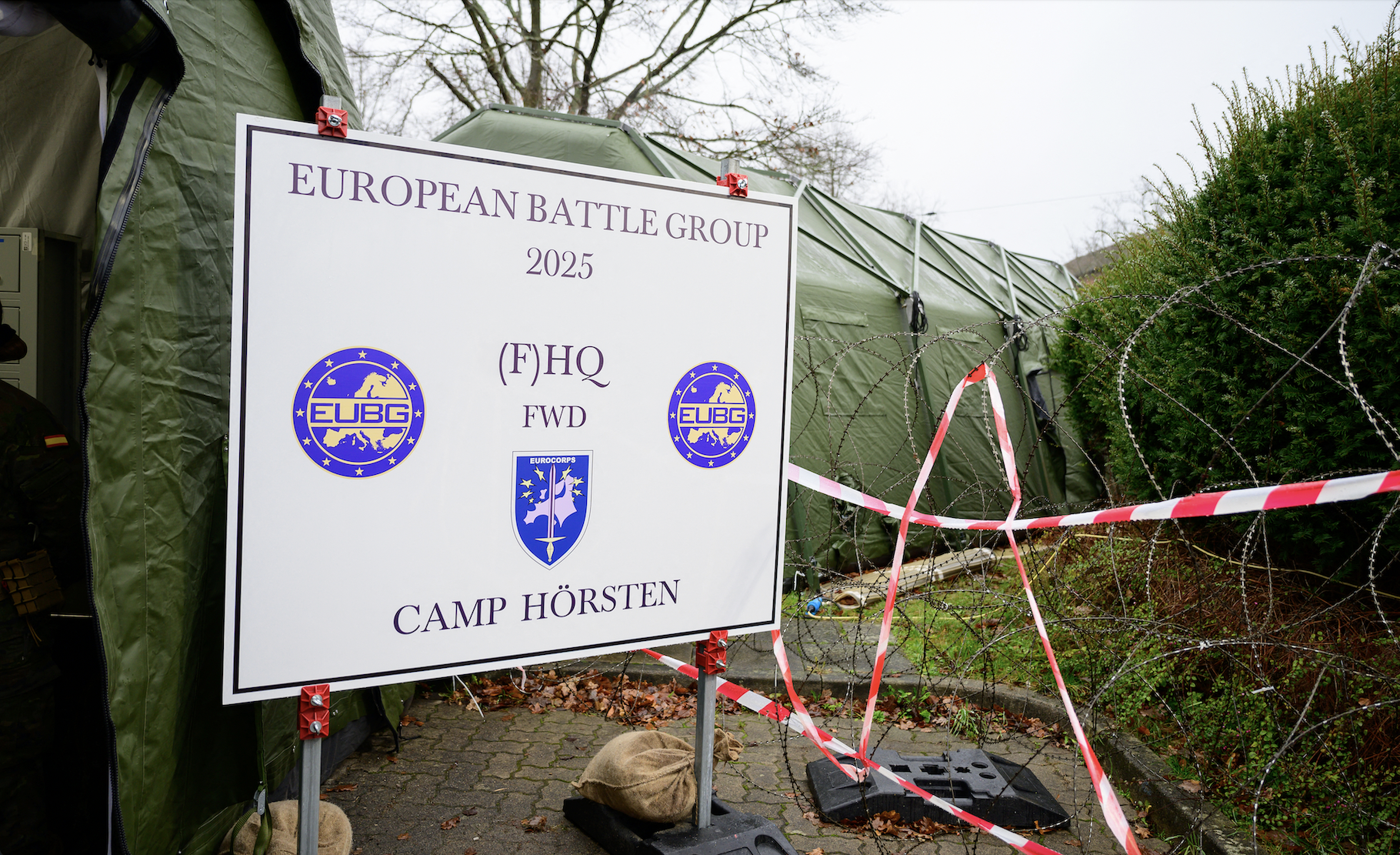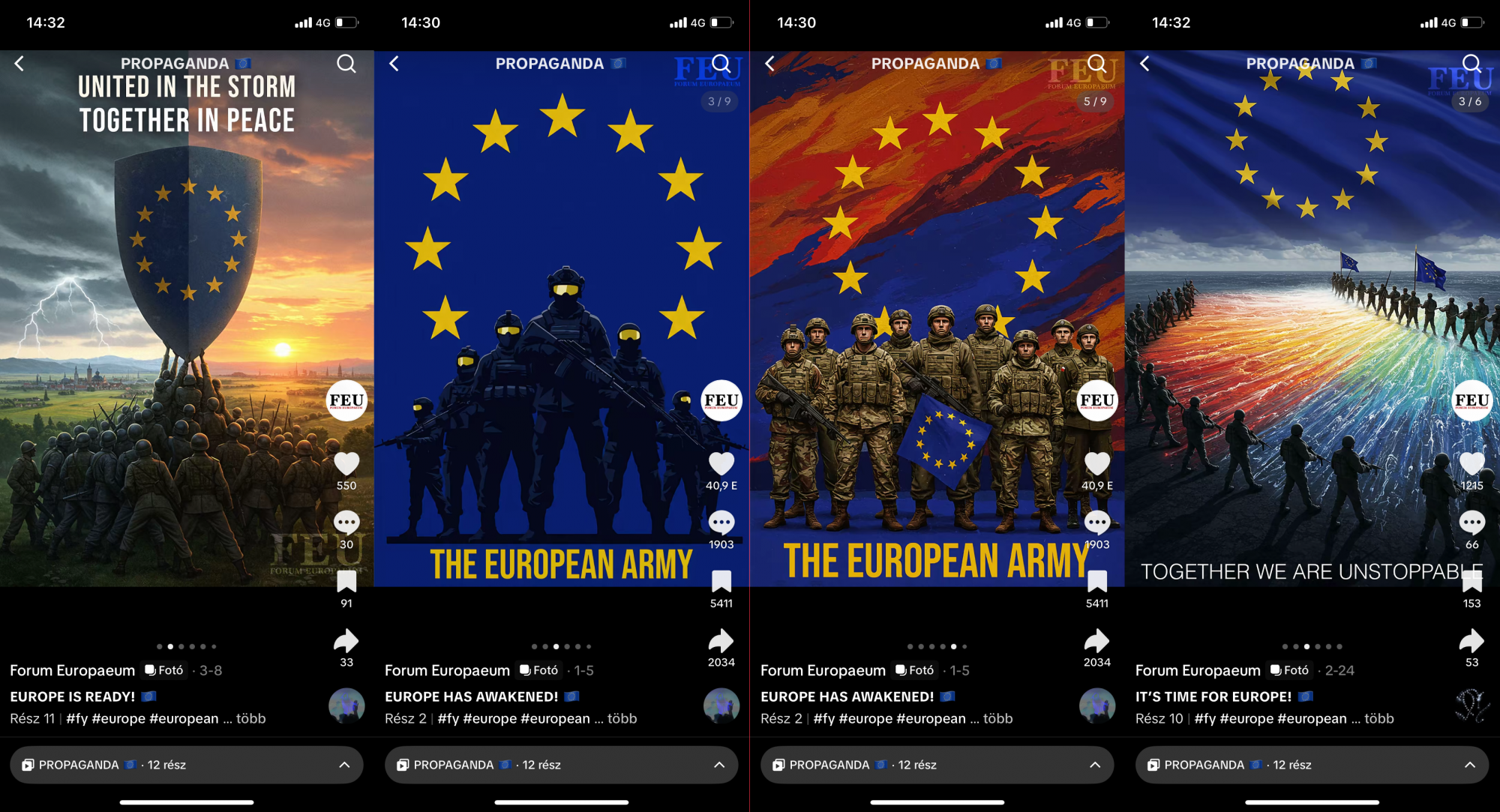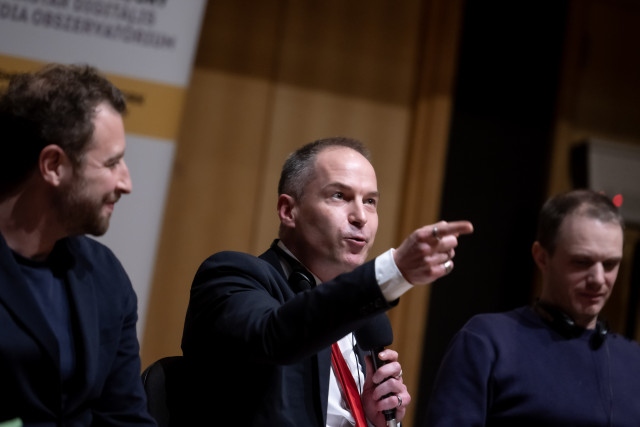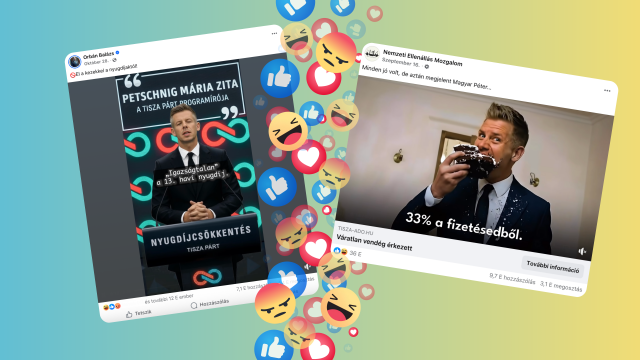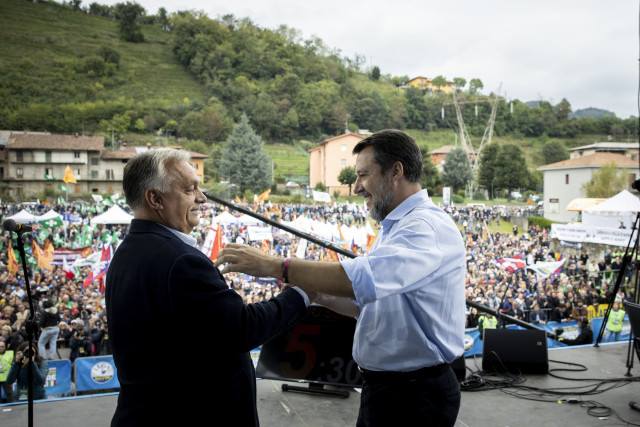The Idea of a Common European Army Goes Viral on TikTok, but AI Fantasies Won’t Become Reality Any Time Soon
2025. április 23. 08:28
Ezt a cikket 2025
áprilisában írtuk.
A benne lévő
információk azóta elavulhattak.
Following the inauguration of Donald Trump, TikTok channels promoting visions of a federal Europe and a common EU army have multiplied. Who is behind the pan-European AI propaganda — and to what extent does it reflect the EU’s actual ambitions for military buildup?
- In late February and early March, TikTok was flooded with AI-generated images and videos depicting a bold, militaristic vision of Europe: one in which the EU defends its millennia-old values under the banner of a pan-European force.
- Though this viral trend loosely echoes the EU’s latest rearmament strategy — ReArm Europe / Readiness 2030 — the content circulating online is not part of any official institutional campaign. The rearmament plan itself does not aim to create a unified European army.
- An analysis of the trend suggests that these materials — many of them described as propaganda by their creators themselves — are produced and disseminated by pan-European movements, activist groups, and sympathetic individuals.
- While neither the idea of federalism nor that of a unified military force is new, interest in both has grown markedly amid recent geopolitical shifts.
‘Make Europe Great Again’
One TikTok post, viewed more than 180,000 times, shows soldiers, police officers, factory workers, and bureaucrats marching under a massive EU flag, with landmarks from across the continent — from the Colosseum to Big Ben — looming in the background. In another channel’s feed, armed soldiers appear under the bold caption: “THE EUROPEAN ARMY.” Elsewhere, fighter jets, tanks, warships, and armored vehicles are depicted under national and EU flags with slogans like “A Unified Europe Fights for Freedom.”
Another photo series with more than 80,000 views shows a mythical figure clad in Greco-Roman robes, preparing to lead the people under the EU banner. In yet another video, battalions of soldiers wearing armbands with the EU emblem march in dramatic succession. Many of the posts are accompanied by the same background track — a song titled Make Europe Great Again, which openly brands itself as a “propaganda anthem.”
EU at full combat readiness. Source: TikTok
In late February and early March, TikTok was inundated with a surge of AI-generated content promoting a vision of a unified, militarized Europe. On a platform where eye-catching visuals and snappy videos reign over text-based posts, these stylized clips and images quickly gained traction. While it is the dramatic imagery that first captures viewers’ attention, the accompanying captions suggest the birth of a new “United Europe”— one positioned not just as an economic bloc, but as a rising military power.
The microtrend was first flagged in early March by German researcher Marcus Bösch in his newsletter Understanding TikTok, where he described the phenomenon as “pan-European slopaganda.” The term — a portmanteau of “AI slop” (a reference to low-quality, mass-produced generative content) and “propaganda” — refers to cheaply made, AI-generated media designed to influence public opinion.
While most prevalent on TikTok, similar posts have begun to surface on other platforms as well, including Instagram, X (formerly Twitter), and Reddit.
“We asked AI to create a European army in 2025, 2035 and 2055”. Source: Vox Europae Hub, TikTok
According to the researcher Marcus Bösch, the cookie-cutter images and videos flooding TikTok appear to reflect Europe’s shifting geopolitical landscape, projecting a far more combative tone than previous EU-themed social media trends. Yet Bösch could not answer who is producing the content — and to what end.
The idea of a common European army has long featured in the agendas of various pan-European organizations. But since the start of Donald Trump’s second term in January, interest in the concept has grown well beyond niche circles. The Trump administration has made it clear that Europe no longer holds a privileged position in American foreign policy — and that NATO member states failing to meet defense spending targets should not expect automatic U.S. support.
This “extraordinary situation” has prompted the European Union to consider its own responses. However, the emerging plans within Brussels diverge sharply from the bottom-up, hyper-militarized vision currently circulating on TikTok.
Data collection in collaboration with Marcus Bösch.
EU Aims to Empower Member States Without Provoking Alarm
While the European Commission announced a major defense investment plan in early March, there is no indication that the European Union intends to create a supranational military force. On the contrary, the EU’s leadership has been careful to ensure that its messaging around defense remains measured and avoids overly aggressive rhetoric.
As part of that effort, the bloc has rebranded its initiative — originally dubbed “ReArm” — to the more reassuring “Readiness 2030,” a title aimed at calming public concerns. (The target date refers to the timeframe by which member states are expected to prepare for the possibility of a future Russian military threat.)
Source: European Commission, Facebook
The European Union unveiled its most ambitious defense plan to date in early March, tying the initiative to an unprecedented sum of €800 billion. To put that in perspective, the figure is nearly one hundred times the amount allocated for defense in the EU’s 2021–2027 budget cycle.
Of that total, €150 billion will be made available through low-interest loans, modeled on the credit component of the bloc’s post-COVID recovery fund. The lion’s share — roughly €650 billion — is expected to come directly from national budgets. The EU’s role, in this case, is limited: it will permit member states to exceed budget deficit limits, provided the additional spending is directed toward defense.
“Nobody is actually proposing to create a single European Army,” Sven Biscop, a foreign and defense policy expert at Ghent University, told Lakmusz. According to Biscop, the current plan serves two key goals: first, to encourage each member state to strengthen its own armed forces; and second, to combine part of their additional defence spending to collectively acquire the strategic capabilities (intelligence, command structures, secure communications, air defence, deep strike) that until now only the US contributed to NATO–and that are too large-scale and too expensive for a single European country to acquire.
“Even in traditional arms manufacturing, it’s no longer feasible to rely solely on national resources,” said Zoltán Szenes, a retired general and former chief of staff of the Hungarian Defense Forces. As an example, he pointed to the Swedish-made Gripen fighter jets: only about 30 percent of their components are produced by Saab, with the remainder sourced from suppliers in other countries. The same holds true for the American F-35s — they are nominally U.S.-made, yet their research and development involve more than a dozen countries.
The EU’s ReArm / Readiness 2030 initiative is explicitly designed to encourage cross-border cooperation in defense procurement. Purchases — ranging from drones and air defense systems to cybersecurity tools — must involve at least two partner states. That framework is reinforced by the bloc’s first-ever European Defence Industrial Strategy, adopted last year, which mandates that nearly half of defense procurements be carried out jointly and prioritize products manufactured within Europe.
“The European Union isn’t building a unified army or a common defense force,” Szenes said. “What it’s doing is helping member states expand their own defense industrial capacities.”
Viktor Orbán at the handover of the Rheinmetall factory in Zalazone industrial park, Zalaegerszeg, on March 26, 2022. Photo by Zoltán Fischer / MTI / Prime Minister’s Press Office
Long-Standing Idea, But Still Unrealistic
The notion of a unified European army has haunted defense policy debates on the continent for at least seventy years, dating back to the dawn of the Cold War. Since the mid-2010s, the idea has resurfaced almost annually and has been endorsed — at least rhetorically — by a number of high-profile leaders, including Jean-Claude Juncker, Hungarian Prime Minister Viktor Orbán (then still aligned with the European People’s Party), Emmanuel Macron, and Angela Merkel. Most recently, Ukrainian President Volodymyr Zelensky raised the proposal at the Munich Security Conference.
Often invoked in response to major geopolitical events — Russia’s annexation of Crimea, the migration crisis, the Trump administration’s withdrawal from a key nuclear missile treaty, or renewed Russian aggression — the idea of a “truly European army” has remained on the level of political declarations.
Among the most vocal advocates for a unified European army today is Volt Europa, a small but growing pan-European political party that secured five seats in the 2024 European Parliament elections. While Volt has an organizational presence in every EU member state, it is officially registered as a political party in only some of them —operating as a movement in others, including Hungary.
On March 5, Volt launched a petition calling for sweeping changes in European defense policy. The demands include the creation of a common EU defense ministry, the replacement of 27 national armies with a fully integrated European armed force, and the establishment of a European military academy. The petition — hosted on the Action Network platform — has gathered nearly 16,000 signatures to date.
“The goal of a unified European military has been a central part of Volt’s political platform from the start,” Kristóf Horváth-Dähnis, Volt Hungary’s communications officer, told our paper. “With this petition, we aim to raise awareness across Europe about the importance of joint defense and to press EU and national leaders to take concrete steps toward building a shared force. Volt views a potential U.S. withdrawal from NATO — and the possibility of renewed Russian aggression in Europe before 2030 — as very real risks.”
Larger European political groupings have typically taken a more cautious approach. The European People’s Party, for example, stated in its 2024 campaign manifesto that any future EU land, sea, air, or cyber forces developed under the banner of a European Defense Union would serve to supplement — not replace — existing national militaries.
The idea of a common European army tends to resurface each time the EU announces new defense initiatives. This was the case in 2021, when the European Defence Fund was approved. At the time, a Polish member of the European Parliament moved quickly to clarify that the measure did not signal the creation of an EU army, dismissing the notion as an “urban legend.”
– Euronews noted in a fact-check published last year.
The EU now wants to introduce an EU army. This is dangerous. Source: VoteLeaveTakeControl.org
This dynamic was on full display during the 2016 Brexit campaign, when pro-Leave advocates falsely claimed the European Union planned to conscript British citizens into a common EU army. A similar tactic resurfaced in the final stretch of last year’s European Parliament elections, when Hungary’s ruling Fidesz party falsely alleged that Manfred Weber was preparing to impose mandatory military service across all member states.
Federalist initiatives advocating for deeper European integration — including a shared defense force — are also regularly weaponized by critics seeking to discredit the EU, Euronews reported.
“As long as the EU lacks real political integration, a common army will remain a dream,”
Zoltán Szenes, the retired general and former chief of staff of the Hungarian Defense Forces, told Lakmusz. “Such a force would primarily serve to allow the EU to credibly project its foreign policy goals. But as long as member states remain divided on foreign affairs and unanimity is required for decisions, there’s no room for manoeuvre on defense either.”
Szenes added that adopting qualified majority voting in foreign policy could dramatically reshape the EU’s decision-making structure — but with the rise of populist and extremist parties across the bloc, the likelihood of such reform is diminishing.
- One example is the EU Battlegroups initiative, launched in 2007. Eighteen units of around 1,500 troops have been formed (with two battlegroups rotating on standby every six months), but none has ever been deployed in a live operation.
- A similar fate befell the SAFE (Synchronized Armed Forces Europe) initiative, adopted by the European Parliament in 2008, which ultimately did not reach the implementation stage.
The most recent iteration of this ambition is the Rapid Deployment Capacity (RDC), announced in 2023. Scheduled to be operational by the end of 2025, the RDC aims to field a force of at least 5,000 troops, with member states voluntarily contributing personnel, capabilities, and logistical support. Whether it will succeed where previous efforts have failed remains an open question.
Bergen, Germany, Dec. 4, 2024 — EU military conducting a combat exercise with 1,700 soldiers from 15 member states. Photo: Philipp Schulze/dpa
According to the former Chief of General Staff, the Council of the EU has never taken responsibility for authorizing a military deployment — not even in instances where the EU’s battle groups were on standby and the financial conditions were in place for a rapid peacekeeping or crisis intervention. Based on his experience, Zoltán Szenes argues that a joint European army remains out of reach for one simple reason: no one has yet decided who would be empowered to give the orders.
As the G7 portal previously reported in a detailed analysis, the EU’s lofty ambitions for a supranational army have so far yielded little more than an increasingly complex web of committees and institutions. Meanwhile, the defense policies of member states remain sharply divided.
Who is propagating the EU army, after all?
“I want to strengthen European identity and unity — something we desperately need in these chaotic times, with Russia on one side and an unpredictable United States on the other,” wrote the Swedish user behind the TikTok channel Europe Federalist Swe in response to questions from our publication.
The user, who creates and posts AI-generated videos as a private individual, is part of a growing group of online voices promoting the idea of a European army. His most popular video — a slick montage of men, women, and tanks in EU-branded uniforms set to Taylor Swift’s “…Ready for It?” — has garnered over 20,000 views.
Although he says he’s been approached by various organizations asking him to join their efforts, he’s so far declined to take part in any larger political movement.
One of the groups fueling the visual push for a European army on TikTok is the Pan-European Foundation (or PEF), a grassroots movement founded in 2023 that’s rapidly expanding its digital footprint through striking, AI-generated content.
PEF promotes a vision of Europe as “unified, culturally rich, politically autonomous, and globally influential.” The organization claims around 1,500 members across the continent, whom it engages through local events, debates, lectures, and workshops to encourage active civic participation.
“Our long-term goal is to enter institutional politics and shape EU decision-making from the inside,” said Rumen Aleksiev, speaking on behalf of PEF in an interview with Lakmusz. “On platforms like TikTok, our aim is to reach as many young Europeans as possible with visually striking, attention-grabbing content. Visibility comes first — the more people see us and become curious, the more likely we are to attract committed, well-informed individuals who believe in our message.”
Much of PEF’s visual aesthetic draws on imagery of armed European defense, often reinterpreting 20th-century propaganda posters. The group also supports the EU’s military ambitions and rearmament efforts.
Forum Europaeum , TikTok
Forum Europaeum describes itself as a “pan-European media outlet” operating multiple TikTok accounts in different languages — including Hungarian , Polish, Italian , and French. On its main channel , which has amassed over 15,000 followers, it features a dedicated “propaganda” section showcasing AI-generated content. Lately, many of these posts have taken on a more militant tone, calling for collective military action under a united European identity.
Dániel Kovács, the founder of Forum Europaeum, told Lakmusz that these so-called propaganda posts don’t reflect the platform’s core mission. “Our main work doesn’t even take place on TikTok,” he said. “It’s on our YouTube channel , where we publish interviews with politicians from across Europe and produce in-depth reports on European issues.”
They turned to generative AI, Kovács explained, simply because “we don’t have artistic skills” — but with this tool, they can produce visual content far more frequently.
Forum Europaeum, he added, has no political agenda and is not affiliated with any party, movement, or organization. Still, the AI-generated images posted on TikTok have proven to be a powerful vehicle for community building.
“We started publishing these posts on January 1, and they immediately drew a lot of views,” Kovács said. “I believe we were the ones who kicked off this TikTok trend. Interest in the videos spiked again after Trump’s inauguration and the early actions of his administration. Even we were surprised by how the algorithm reacted.”
Cover image: Bence Kiss/444
A szerzőről

Német Szilvi
Újságíró, médiakutató. Az álhírek és a dezinformáció terjedését vizsgálja a közösségimédia-kutatás eszközeivel, valamint a technológiai platformok és a rejtőzködő médiaorgánumok szerepével foglalkozik.
Kövess minket
Ne maradj le egy anyagunkról sem, kövess minket máshol is!


